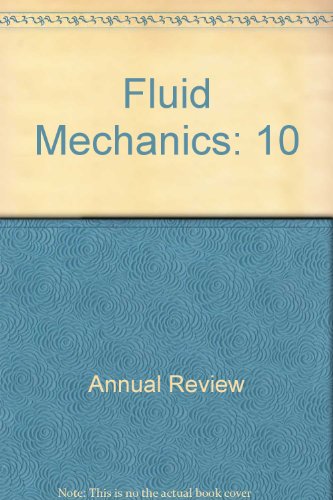Particle Rafts and Armored Droplets
IF 30.2
1区 工程技术
Q1 MECHANICS
引用次数: 5
Abstract
Particles floating at interfaces are commonly observed in nature, as well as in industrial processes. When the particles are non-Brownian particles, large deformations of the interface are created that induce long-ranged capillary interactions and lead to the formation of particle rafts with unique characteristics. In this review we discuss recent efforts in investigating particle raft formation and the role of the rafts’ own weight during dynamic clustering. Under specific conditions, these rafts can ultimately collapse and sink. When subjected to external or internal forces, the raft undergoes large deformations that test the mechanical characteristics of this interfacial composite material. It can behave as a continuous elastic sheet under compression, although its discrete nature can also trigger its fragmentation via interparticle interactions. Finally, armored droplets, drops covered by a protective shell of particles, can lose their integrity when submitted to dynamic deformations, resulting in the ejection of particles or the fracturing of the armor. Open questions to understand the properties of this material are highlighted and future research to understand the fundamental physics of particle rafts, the customization of the cluster formation, or the disassembly of this collective material is suggested.粒子筏和装甲液滴
悬浮在界面上的颗粒在自然界和工业过程中都很常见。当粒子是非布朗粒子时,会产生界面的大变形,引起长距离的毛细管相互作用,并导致形成具有独特特征的粒子筏。在这篇综述中,我们讨论了最近在研究颗粒筏的形成以及筏自身重量在动态聚类中的作用方面所做的努力。在特定条件下,这些木筏最终可能会坍塌和下沉。当受到外力或内力时,筏板会发生大变形,从而测试这种界面复合材料的机械特性。它在压缩下可以表现为连续的弹性片,尽管它的离散性质也可以通过颗粒间的相互作用触发其碎裂。最后,装甲液滴,即被颗粒保护壳覆盖的液滴,在受到动态变形时可能会失去完整性,导致颗粒喷出或装甲破裂。强调了了解这种材料性质的悬而未决的问题,并建议未来进行研究,以了解粒子筏的基本物理、团簇形成的定制或这种集体材料的拆卸。
本文章由计算机程序翻译,如有差异,请以英文原文为准。
求助全文
约1分钟内获得全文
求助全文
来源期刊
CiteScore
54.00
自引率
0.40%
发文量
43
期刊介绍:
The Annual Review of Fluid Mechanics is a longstanding publication dating back to 1969 that explores noteworthy advancements in the field of fluid mechanics. Its comprehensive coverage includes various topics such as the historical and foundational aspects of fluid mechanics, non-newtonian fluids and rheology, both incompressible and compressible fluids, plasma flow, flow stability, multi-phase flows, heat and species transport, fluid flow control, combustion, turbulence, shock waves, and explosions.
Recently, an important development has occurred for this journal. It has transitioned from a gated access model to an open access platform through Annual Reviews' innovative Subscribe to Open program. Consequently, all articles published in the current volume are now freely accessible to the public under a Creative Commons Attribution (CC BY) license.
This new approach not only ensures broader dissemination of research in fluid mechanics but also fosters a more inclusive and collaborative scientific community.

 求助内容:
求助内容: 应助结果提醒方式:
应助结果提醒方式:


